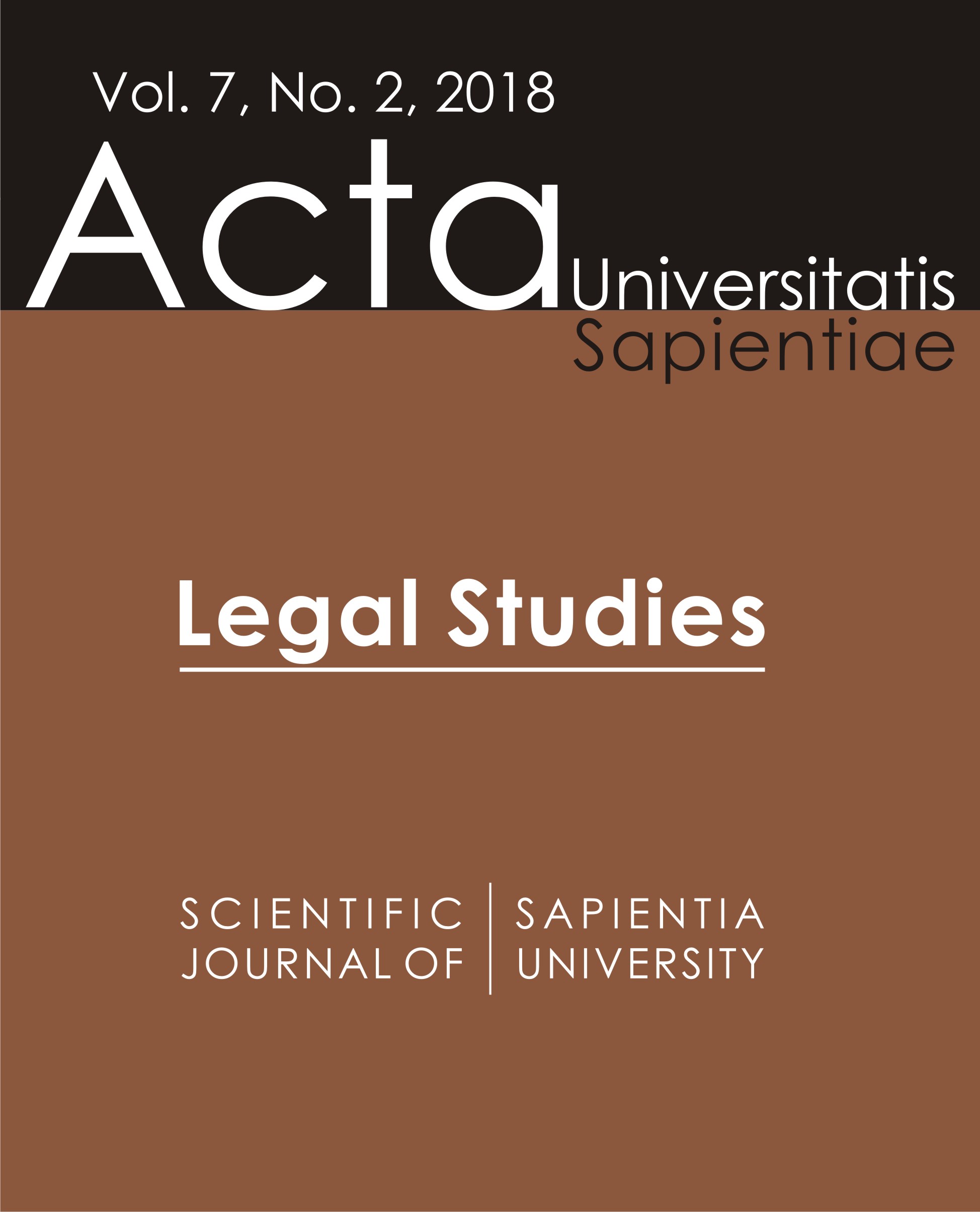A nemzeti kisebbségi jogok biztosításának alakulása Romániában 1918–2018, avagy „A gyulafehérvári ígéretek megtagadásától a Minority SafePack ellenzéséig – 100 év romániai kisebbségjogi történet”
The History of Ensuring Rights to Minorities in Romania - 1918–2018 or “From the Denial of Promises Made at Alba-Iulia to Opposing the Minority SafePack – a 100-year History of Romanian Minority Law”
Author(s): Gyula FábiánSubject(s): Law, Constitution, Jurisprudence, Human Rights and Humanitarian Law, EU-Legislation
Published by: Scientia Kiadó
Keywords: minority rights; minority assimilation; resolution of Alba-Iulia; minority law in Romania; Hungarians in Transylvania;
Summary/Abstract: The question of the situation of national minorities, and implicitly the status of the Hungarian minority are of continued timeliness in the Romanian legal environment. These questions are all the timelier in the year 2018, in the period of the 100-year anniversary of the formation of Greater-Romania. This writing attempts to present the evolution of the main questions of the legal regulation of minority rights in Romania and the answers given to those questions. The legal regime of minority rights proposed on the level of promises on principle at Alba-Iulia in 1918 is presented, as is the history of partial fulfilment and lack of fulfilment of these promises. The environment of legal regulations which constituted the foundation for the policy of assimilation during the inter-war period is presented, as is the detente following the Second World War, the short-term widening of minority rights, the ephemeral territorial autonomy granted to the Hungarian minority followed by the revitalization of oppressive regulation with the aim of assimilation. After the regime change of 1989 the question of minority rights regulation took a new turn in the context of Euro-Atlantic integration which however was not sufficient for the resolution of the situation of national minorities in Romania in a European spirit. The author demonstrates with demographic data the effects of the insufficiencies of minority law on the composition of the population according to different nationalities. As a conclusion it is stated that the regulation of minority rights shows a cyclical oscillation in the course of which the Romanian state, primarily as a response to international pressure, and always reluctantly is willing to improve on the situation of national minorities by means of legislation, while avoiding ensuring collective rights.
Journal: Acta Universitatis Sapientiae, Legal Studies
- Issue Year: 7/2018
- Issue No: 2
- Page Range: 165-261
- Page Count: 97
- Language: Hungarian

